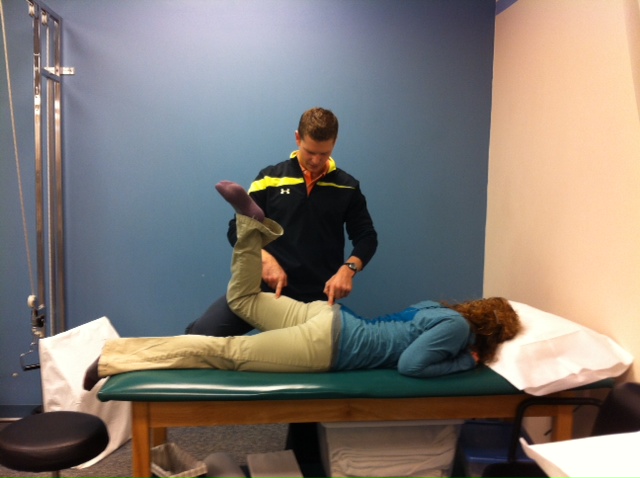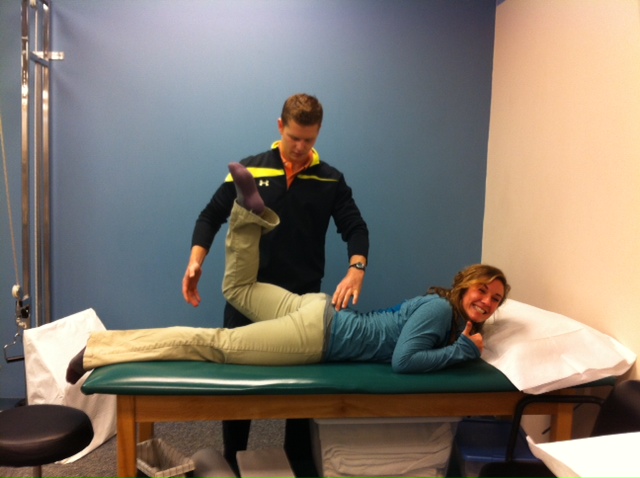- Home
- About Us
- TSPT Academy
- Online Courses
-
Resources
- Newsletter
- Business Minded Sports Physio Podcast
- Day in the Life of a Sports PT
- Residency Corner
-
Special Tests
>
-
Cervical Spine
>
- Alar Ligament Test
- Bakody's Sign
- Cervical Distraction Test
- Cervical Rotation Lateral Flexion Test
- Craniocervical Flexion Test (CCFT)
- Deep Neck Flexor Endurance Test
- Posterior-Anterior Segmental Mobility
- Segmental Mobility
- Sharp-Purser Test
- Spurling's Maneuver
- Transverse Ligament Test
- ULNT - Median
- ULNT - Radial
- ULNT - Ulnar
- Vertebral Artery Test
- Thoracic Spine >
-
Lumbar Spine/Sacroiliac Joint
>
- Active Sit-Up Test
- Alternate Gillet Test
- Crossed Straight Leg Raise Test
- Extensor Endurance Test
- FABER Test
- Fortin's Sign
- Gaenslen Test
- Gillet Test
- Gower's Sign
- Lumbar Quadrant Test
- POSH Test
- Posteroanterior Mobility
- Prone Knee Bend Test
- Prone Instability Test
- Resisted Abduction Test
- Sacral Clearing Test
- Seated Forward Flexion Test
- SIJ Compression/Distraction Test
- Slump Test
- Sphinx Test
- Spine Rotators & Multifidus Test
- Squish Test
- Standing Forward Flexion Test
- Straight Leg Raise Test
- Supine to Long Sit Test
-
Shoulder
>
- Active Compression Test
- Anterior Apprehension
- Biceps Load Test II
- Drop Arm Sign
- External Rotation Lag Sign
- Hawkins-Kennedy Impingement Sign
- Horizontal Adduction Test
- Internal Rotation Lag Sign
- Jobe Test
- Ludington's Test
- Neer Test
- Painful Arc Sign
- Pronated Load Test
- Resisted Supination External Rotation Test
- Speed's Test
- Posterior Apprehension
- Sulcus Sign
- Thoracic Outlet Tests >
- Yergason's Test
- Elbow >
- Wrist/Hand >
- Hip >
- Knee >
- Foot/Ankle >
-
Cervical Spine
>
- I want Financial Freedom
- I want Professional Growth
- I want Clinical Mastery
|
From my clinical experiences thus far, I have found that many individuals with low back pain lack proper gluteus maximus strength. (This should not be a surprise to you unless you went to physical therapy school when dinosaurs were still roaming). I often find that the gluteals are weak due to a combination of disuse atrophy and muscle inhibition secondary to pain. In the case of disuse atrophy, the individual does not activate their gluts and therefore preferentially activates other muscles to perform the movement. For example, think about the individual who arches his/her back to pick up a box rather than perform a hip hinge and squat OR consider the individual who rests in lumbar extension, locking out the lumbar facets and resting on the anterior hip ligaments. They avoid the gluteals and activate their lumbar paraspinals and hamstrings to perform movements. With pain inhibition, the gluteals are not receiving proper neuromuscular facilitation because pain is overriding the movement. The muscles are temporarily unable to fire because pain is inhibiting the activation. In either situation, properly assessing hip strength and assessing the cause of weakness is a fundamental part of a low back evaluation. In this post, I want to discuss hamstring dominance is relation to gluteus maximus testing. As I stated in the previous paragraph, poor movement patterns often lead to improper activation of the glut muscles. Since the gluts are not helping perform the movement, a different muscle overcompensates to perform the movement. Clinically, I often find that this other muscle is the hamstrings (or lumbar paraspinals). Individuals that preferentially activate their hamstrings prior to their gluts are called 'hamstring dominant.' This can be problematic because the gluteals are meant to act as a hip stabilizer and extensor. When they do not fire first, the gluteals do not stablize. The hamstrings attempt to act as both a prime mover and stabilizer. The test for hamstring dominance is similar to the Kendall Glut Max testing position. Place the individual in prone with the tested knee bent to 90 degrees. Ask them to lift their leg off the table. In the normal healthy individual, the glut max engages prior to the hamstrings. Proper activation order: 1. TrA engages, 2. gluteus maximus activates, 3. hamstrings fire as the leg is lifted. If the hamstrings fire before the glut max, the individual drives that motion with the hamstrings. In the video below, the individual presents with both hamstring and lumbar paraspinal dominance over gluteal muscle activation. He compensates by arching through his low back and avoids using his glutes. (Video feed has been taken from The Movement Corner on the OPTIM Manual Therapy Felowship Website) Do not be fooled by strong gluts in the low back pain population. After assessing the glut max, retest for hamstring dominance to ensure they are not over-activating the hamstrings. I frequently discuss dominance patterns on The Movement Corner as they are common causes of movement dysfunction. I highly recommend assessing for hamstring dominance in your lumbar patients.
-Jim Heafner PT, DPT, OCS
11 Comments
Jeremy
11/13/2014 11:28:14 pm
So apparently multifidus does not activate at all? No pelvic floor? No deep quadratus? TrA is not the end-all be-all of deep trunk stabilization. It's well backed up in literature that there is multidirectional stabilization.
Reply
Jim
11/14/2014 11:21:24 pm
Jeremy
Reply
Liz
11/16/2014 07:30:44 am
Thanks for the post - that's a great test for hamstring dominance and I am looking forward to using it with some of my patients. How do you typically document your findings? Is it as simple as:
Reply
Jim
11/16/2014 09:54:03 pm
Liz,
Reply
Christian
11/19/2014 03:33:35 am
Hi Jim,
Reply
James Lau
12/17/2014 09:56:02 am
Great post Jim. Learning heaps on this website. So just to clarify you are just feeling/palpating for the order of contraction: 1) gluts 2) hamstring and if there is a coordination issue then you would see h/s fire first?
Reply
12/18/2014 07:54:22 pm
Christian and James,
Reply
Ken
12/15/2016 06:15:23 pm
I had a patient with this today! Now how to treat them is the real question.
Reply
Michael
12/15/2016 06:23:44 pm
I'm curious how you and Optim view general exercise for core stability in place of cueing the TrA, Multifidi, etc... like the Koumantakis article or others have shown to be equally effective. I have heard of other fellowships/clinics that don't get as specific.
Reply
Greg
6/13/2018 06:57:16 pm
Hello Jim,
Reply
Aaron Driver
1/8/2019 10:02:58 pm
In the prone knee bend @ 90 degrees it is worth while assessing for gluteal stabilisation with a board placed on top of the soles of the feet
Reply
Leave a Reply. |
Dr. Brian Schwabe's NEW Book in partner with PaleoHacks!
Learn residency-level content on our
Insider Access pages We value quality PT education & CEU's. Click the MedBridge logo below for TSPT savings!Archives
July 2019
Categories
All
|








 RSS Feed
RSS Feed